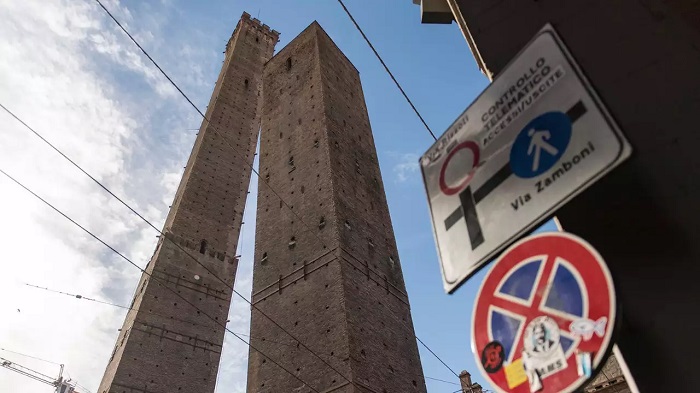
The historic Garisenda tower in Bologna, Italy, colloquially known as the ‘leaning tower,’ is facing an unprecedented threat to its structural integrity after nearly a millennium of standing tall. Rising to a height of 150 feet, the tower has maintained a distinctive 4-degree tilt since the 14th century, a consequence of earlier attempts to stabilize it by removing the top part of the structure.
Despite ongoing efforts by Italy to preserve and protect the tower over the years, recent developments have raised concerns about its stability. Reports indicate that the iconic tower is now leaning excessively, prompting city officials to activate a civil protection plan to address the risk of a sudden and unexpected collapse.
In response to the heightened threat, a metal cordon is set to be installed around the tower, serving the dual purpose of containing potential debris and minimizing the vulnerability of adjacent buildings in the event of a collapse. The city council has issued a statement outlining the necessity for precautionary measures, emphasizing the need to protect both the population and surrounding structures.
The alert was raised by a scientific committee overseeing the site since 2019, equipped with sensors to monitor the tower’s movements. Alarming readings in October 2023 triggered concerns, prompting the committee to warn of an “unexpected and accelerated trend” involving “crushing compression” at the tower’s base. The report highlighted the risk of expansion in the cracks observed in the stones at the tower’s foundation, potentially impacting the layers above.
In response to the report, civic authorities swiftly closed off the area surrounding the tower, implementing road closures to ensure public safety. The situation underscores the delicate balance between preserving historical landmarks and addressing structural risks to prevent potential disasters.







